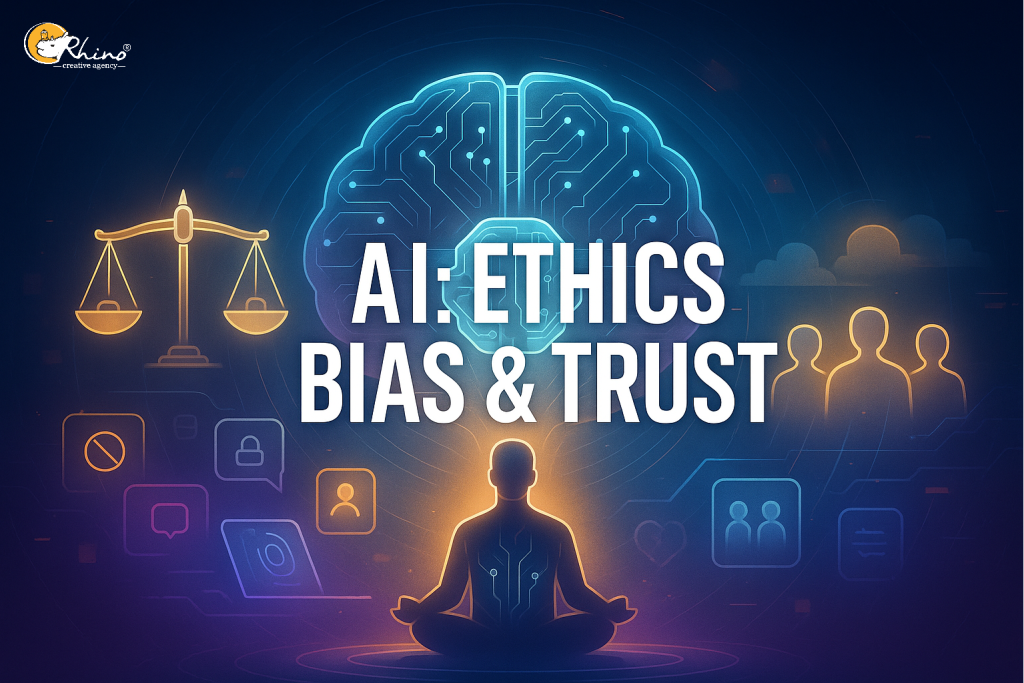AI’s Ethical Tightrope: Navigating Bias, Building Trust, and Demystifying the Black Box
Artificial intelligence is rapidly transforming our world, from how we work and learn to how we connect with one another. Yet, as AI becomes more integrated into our lives, it’s increasingly clear that its development and deployment aren’t just technical challenges—they’re deeply ethical ones. The very fabric of AI, from the data it learns from to the algorithms it uses, is susceptible to ingrained biases that can lead to unfair or discriminatory outcomes. This “black box” problem of AI, where a system’s decisions are opaque and unexplainable, erodes trust and poses a significant risk to individuals and society. Addressing these concerns is paramount to ensuring AI’s future is one of shared prosperity, not one of amplified injustice.
The Inescapable Problem of Algorithmic Bias
One of the most pressing ethical issues in AI is algorithmic bias. AI systems learn from data, and if that data reflects existing societal biases, the AI will not only learn those biases but can also amplify them. For example, a hiring algorithm trained on historical hiring data might learn to favor male candidates because the company’s past hires were predominantly male. This isn’t just a hypothetical problem; it has manifested in real-world scenarios, from facial recognition systems that misidentify people of color to loan application algorithms that unfairly penalize minority groups.
Bias can creep into an AI system at multiple stages:
- Data Collection: The data used to train the model may be unrepresentative of the population, leading to selection bias.
- Feature Selection: The features chosen to train the model might be correlated with protected characteristics (like race or gender), even if those characteristics are not explicitly included.
- Model Training: The algorithm itself may inadvertently learn and reinforce existing biases in the data.
Mitigating this bias requires a multi-faceted approach. Organizations must prioritize diverse and representative data from the start, actively seeking out and including data from underrepresented groups. Data preprocessing techniques like re-sampling and re-weighting can help address imbalances. Furthermore, a diverse and inclusive development team is crucial, as different perspectives can help identify and challenge potential biases early in the process. Regular auditing and monitoring of AI systems are also essential to catch and correct biases that may emerge over time. - The Quest for Transparency and Explainable AI (XAI)
Another major hurdle to building trust in AI is the “black box” problem. Many advanced AI models, particularly deep neural networks, are so complex that even their creators can’t fully explain how they arrive at a particular decision. This lack of transparency is a serious ethical concern, especially in high-stakes applications like medical diagnosis, judicial sentencing, or autonomous vehicles. How can we trust a system if we can’t understand why it made a specific choice?
The solution lies in the field of Explainable AI (XAI). XAI aims to make AI models more transparent and interpretable. It isn’t about revealing every line of code, but about providing clear, human-understandable explanations for an AI’s decisions. For example, a medical AI that recommends a treatment for a patient should be able to explain that the recommendation is based on a specific combination of lab results, patient history, and medical literature. - Achieving transparency isn’t just a technical exercise; it requires a commitment to ethical principles. This includes clear documentation of how AI models are built, what data they were trained on, and how they’re intended to be used. Regulatory frameworks, such as the EU’s AI Act, are also playing a crucial role by mandating transparency requirements for certain high-risk AI applications.
The Foundation of Trust in AI Systems - Ultimately, the future of AI depends on our ability to build trust. Without public trust, AI won’t be widely adopted, and its potential for good will be limited. Trust isn’t an abstract concept; it’s earned through consistent, ethical, and responsible practices.
- Accountability: Clear lines of accountability must be established. Who is responsible when an AI makes a mistake? Is it the developer, the deployer, or the user? Without a clear answer, it’s impossible to hold anyone responsible for harm.
- Human Oversight: The concept of “human in the loop” is critical. While AI can augment human intelligence and automate tasks, humans must remain in control, especially for decisions with significant consequences.
- Ethical Frameworks: Organizations should develop and adhere to robust ethical frameworks for AI development and deployment. These frameworks should be based on core principles like fairness, privacy, safety, and human dignity.
- Building trust is a continuous process that involves open communication, education, and a willingness to acknowledge and correct mistakes. By proactively addressing ethical concerns, mitigating bias, and championing transparency, we can ensure that AI remains a tool for human empowerment, not one that perpetuates inequality. The journey is complex, but it’s one we must take together to build an AI-powered future that is both acknowledge and humane.

